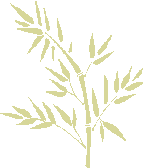




|
Home |
|
Classes |
|
Syllabus / Styles |
|
Biography |
|
Poetry |
|
Photos |
|
Articles |
|
Labyrinths |
|
Storytelling |
|
Artwork |
|
Respects Due |
|
Contact |
|
Links |


|
...with a spirit of self-exploration |

|
Pennine Tai Chi |



|
A Cretan Odyssey |
|
In September 1999 I undertook an annual visit to Crete to teach Tai Chi at a holistic holiday centre on the south coast. Soon after arriving on an overnight ferry from Athens / Piraeus, I hired a motorcycle and visited Knossos. It was my first visit and initially I spent a little time looking around by myself before deciding that it would be rewarding to go with a guide. It was both highly informative and fascinating to have a guide who was passionate about his subject. Perhaps I can share a few insights from this, which may put a slightly different perspective onto some of the well-known stories associated with this area. The versions, which we usually hear, come from the legends and myths of mainland Greece. However, as is usually the case, the history which we inherit, is written by the victors and consequently perhaps only tells one side of the story.
BackgroundThe Minoan civilisation centred on Crete was the most dominant and advanced in the Aegean from around 2000 B.C. onwards. It was evidently peaceful and prosperous and worshipped a Mother Goddess. Great settlements grew up at Knossos and Phaistos (Festos). Palaces and houses were built with advanced water supply systems and air conditioning (heating and cooling) systems. However the civilisation was greatly weakened on a couple of occasions by natural disasters. These were probably an earthquake and the eruption of a volcano on Thera (now Santorini). By 1400 B.C. the Mycenaeans had gained control in the Aegean. From this time onwards the Mycenaean / Greek culture became dominant.
Theseus and the MinotaurThe Cretan explanation of Theseus and the Minotaur, is quite different from the one which we are accustomed to hearing. The Greek story tells that 7 youths and 7 maidens were sent by Athens as an annual tribute (some versions say every 9 years) to King Minos of Crete. These, we are told, were sacrificed to the half human half bull creature called the Minotaur. The Cretan version says that yes, youths and maidens were sent over from Athens, but these were the sons and daughters of the Athenian aristocracy who came to learn from the Minoan culture which was at that time far in advance of its Greek counterpart. It is said that because life was so much better in Crete, very often those who came would not return to the more primitive life in Athens. The Athenians, not wanting to admit to their own people that the Minoan culture was so much superior, told the story that they had been devoured by a bull like creature in a labyrinth. The bull is in fact the symbol of the Minoans (frescoes at Knossos depict the ritual of leaping over bulls). The labyrinth story is said to come from the fact that to strangers, the many streets, alleys and passages at Knossos would give the appearance of a maze. We are told that King Minos’s daughter Ariadne, gave Theseus a ball of golden thread to help him retrace his steps out of the labyrinth. She left Crete with Theseus and their first stop was on the Island of Delos where in celebration they performed the crane dance. Its spiralling steps are said to re-enact the labyrinthine journey. Later, on the Island of Naxos, Theseus abandoned Ariadne. It seems likely that Ariadne derives from a much older Mother Goddess figure, greatly revered by the Minoans but taking a lesser role in the Greek stories. The crane, like the stork, is considered to be the bringer of life and the crane dance could be considered to be a mating dance. In this instance it could represent the cross fertilisation of cultures. The story may be telling us in symbolic language, of the help that Greek culture received from the matriarchal Minoan civilisation, only for these qualities to be abandoned by the predominantly patriarchal Greek culture. The story of Theseus (a Greek) slaying the Minotaur (Minoans) is really a symbol of the Greek army coming in and conquering the Minoans after the civilisation had been weakened by natural disasters. In fact the Greek story of their principle god Zeus, says that he was born and raised on Crete. This could be taken as an analogy for much of Greek culture having been born out of the Minoan.
Daedalus and IcarusThe Cretan explanation of the flight of Daedalus and Icarus is also quite different. Overlooking Knossos and close to the coast stands a large plateau of land. Here, hot air rises, producing thermal currents where birds can soar. The great inventors of the day would observe this phenomenon and experiment with prototypes of what we would today call hang-gliders. They say that the Athenian visitors would have observed this and gone home with the story of people trying to fly away. Perhaps some did come down in the sea like Icarus. My trip then took me from Knossos in the north to Phaistos in the south and then further west to a small but beautiful bay called Agios Pavlos. There I have an annual appointment to teach Tai Chi at a holistic centre called the Practice Place. This year I introduced a one-hour per day session on labyrinths. This involved looking at the evolution from spiral to labyrinth, drawing various designs and talking on some of the myths and stories associated with them. Later, a group of us created a Classical (Cretan) 7 circuit stone labyrinth just a little down the coast at a point where a river joins the sea. This fulfilled a dream of mine in creating a labyrinth in one of the homes of labyrinth mythology. I am told by a visitor who has been there recently, that the labyrinth is still there (though the invading winter sea has left it in need of a little restoration)!
JOHN BOLWELL
Bibliography The Goddess in the Labyrinth by John Kraft
|